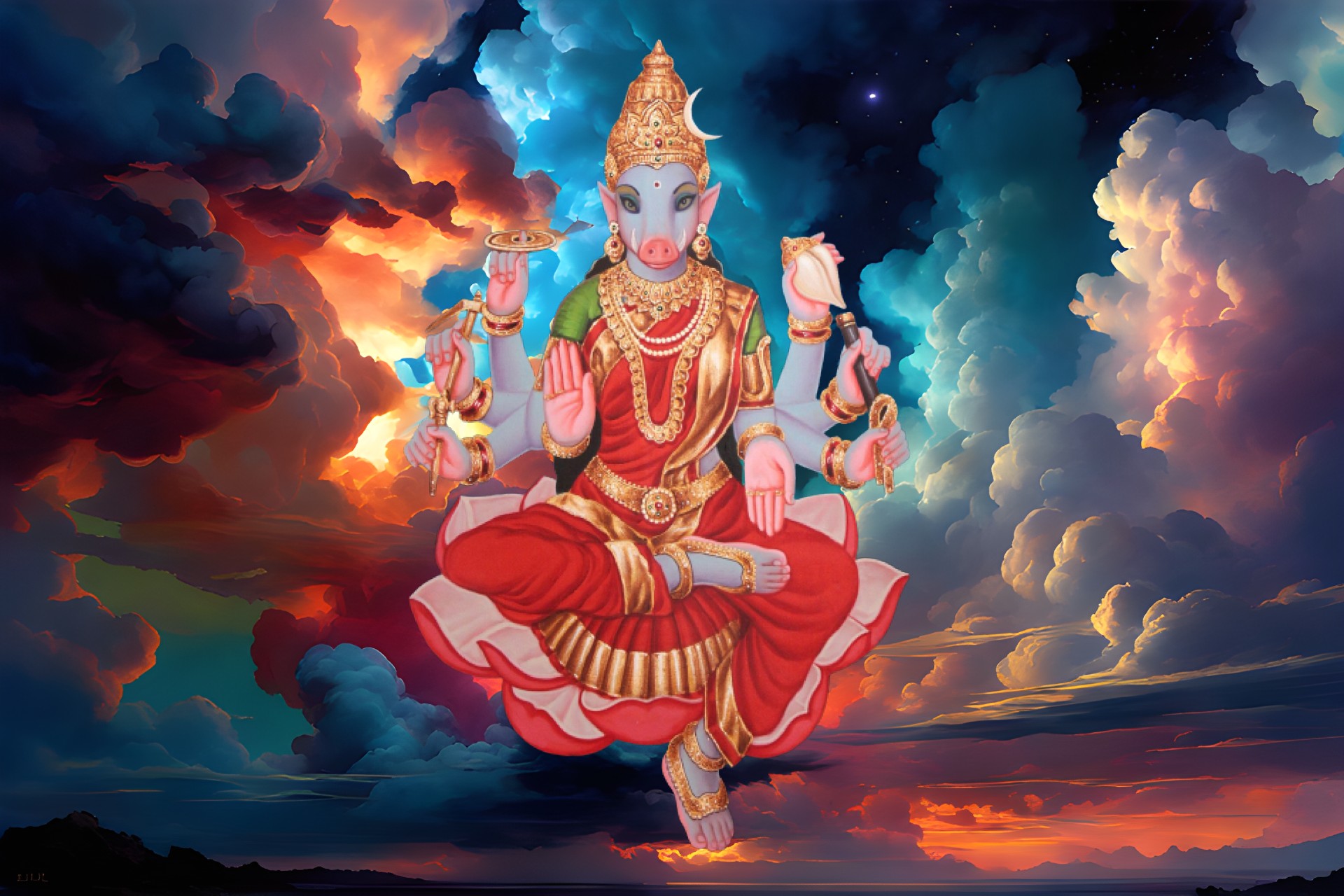Introduction:
India is a land of diverse cultures and rich spiritual traditions, each contributing to the vibrant tapestry of the nation’s religious heritage. Among the myriad deities revered, Varahi Amman stands as a powerful and enigmatic goddess, embodying the divine feminine with grace and strength. In this blog post, we delve into the mystical realm of Varahi Amman, exploring her significance, myths, and the profound influence she has had on devotees for centuries.
Varahi Amman: A Divine Presence
Varahi Amman is a form of the Mother Goddess, often depicted as a boar-headed deity, symbolizing her ferocious and protective nature. She is considered one of the Matrikas, a group of fierce goddesses, and is closely associated with Varaha, the boar incarnation of Lord Vishnu. Varahi is revered in various regions of India, particularly in Tamil Nadu, Karnataka, and parts of Sri Lanka.
Iconography:
Varahi Amman is typically portrayed with the face of a sow (female pig), representing her ferocity and fearlessness. Adorned with divine ornaments and seated or standing on a lotus, her iconography signifies both her divine and maternal aspects. The symbolism of the sow is multifaceted, embodying the goddess’s ability to dig deep into the earth to unearth hidden truths and protect her devotees.
Myths and Legends:
The mythology surrounding Varahi Amman is as captivating as her divine form. One prominent legend associates her with the battle between the demon Raktabija and the goddess Durga. As the battle raged, every drop of Raktabija’s blood that fell to the ground created a clone of him, making him virtually indestructible. To overcome this challenge, Varahi emerged from the forehead of Durga and devoured the blood, thereby annihilating the demon’s army.
Another narrative links Varahi to the Matsya (fish) and Kurma (turtle) avatars of Lord Vishnu. It is said that Varahi assisted Vishnu in retrieving the Vedas, which were stolen by demons.
Spiritual Significance:
Devotees of Varahi Amman seek her blessings for protection, courage, and the removal of obstacles. Her worship is often associated with rituals involving the recitation of sacred mantras and the offering of specific foods like sesame seeds, black gram, and red flowers. The goddess is believed to safeguard her devotees from negative energies, providing strength and resilience in the face of adversity.
Varahi Amman Temples:
Numerous temples dedicated to Varahi Amman can be found across South India. One notable example is the Kurukulla Peetam in Karnataka, where the goddess is revered as a powerful and benevolent deity. Pilgrims flock to these sacred sites to experience the divine presence of Varahi and seek her divine blessings.
Conclusion:
Varahi Amman, with her captivating iconography and compelling mythology, holds a revered place in the hearts of devotees who turn to her for strength and protection. As we explore the depths of Hindu mythology, Varahi Amman’s boar-headed form emerges as a symbol of the divine feminine, embodying both ferocity and compassion. Through her worship, followers not only connect with the mystical realms of spirituality but also find solace in the protective embrace of this awe-inspiring goddess.
